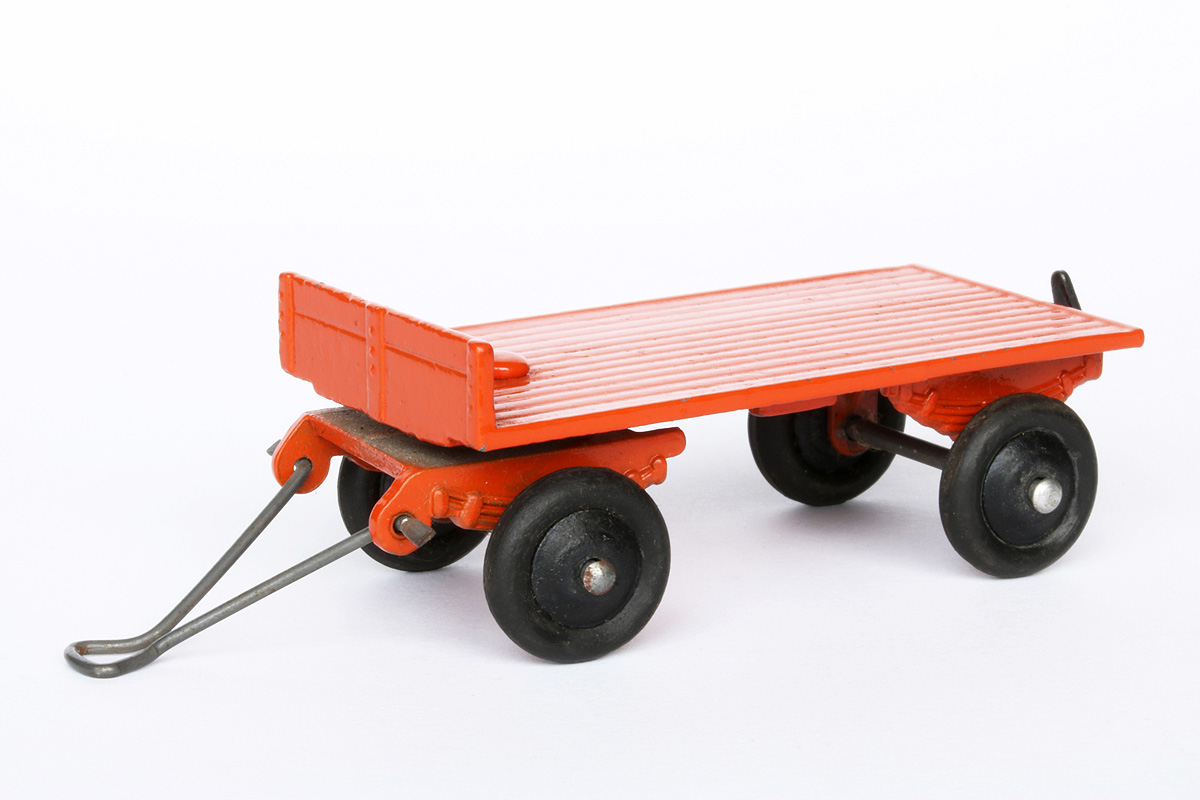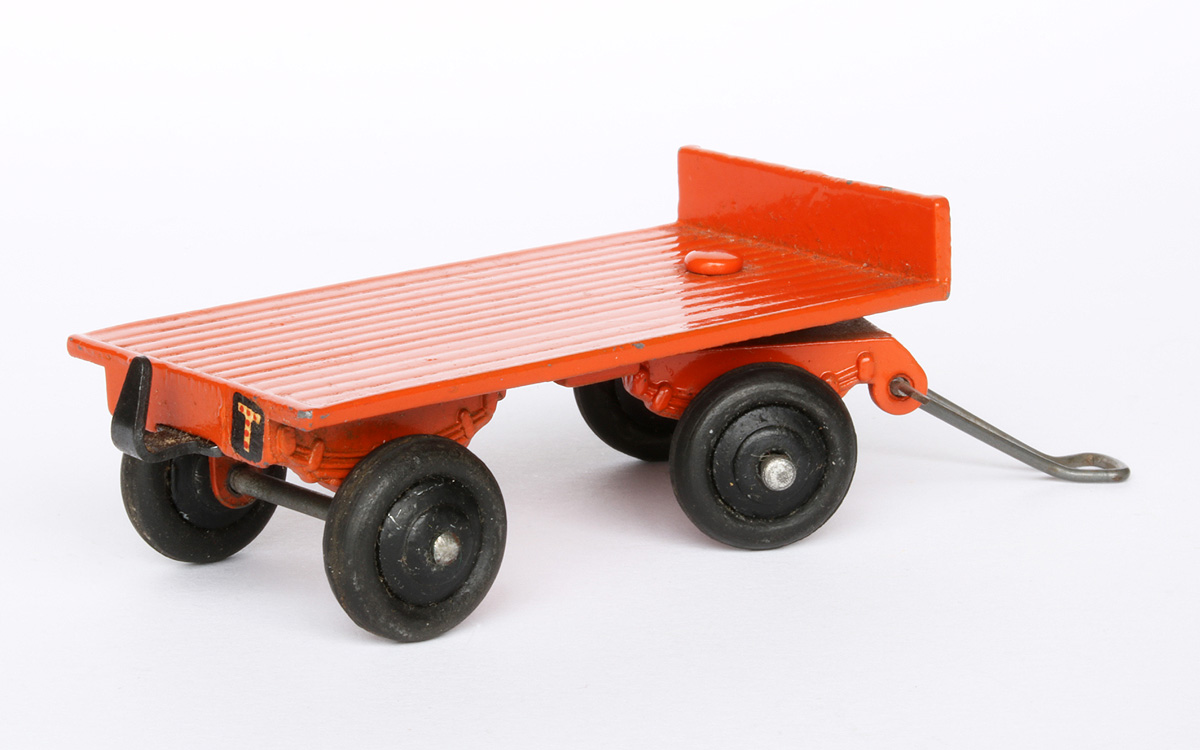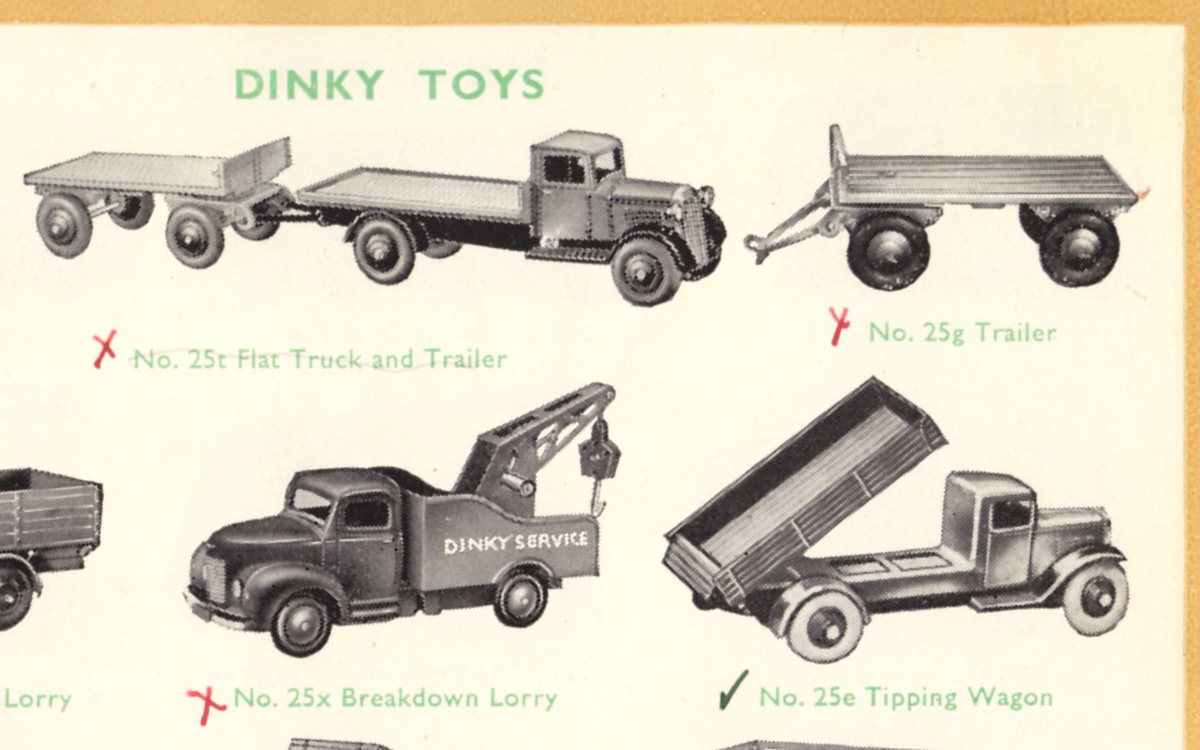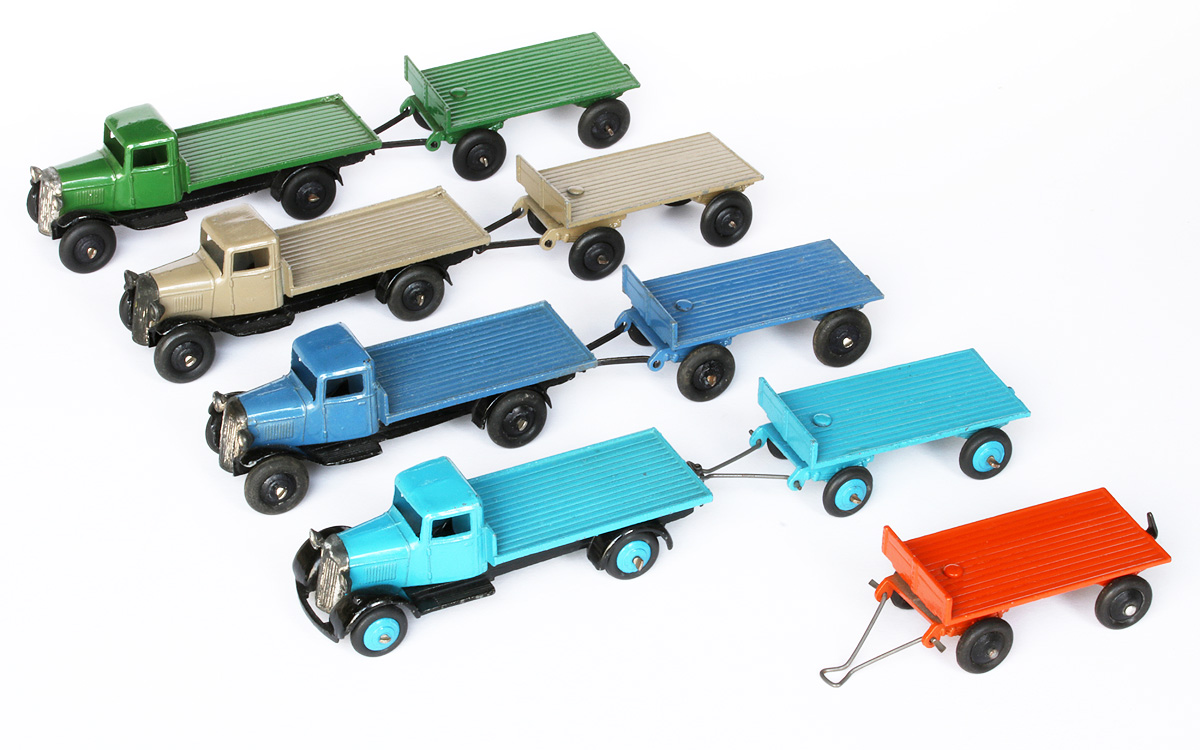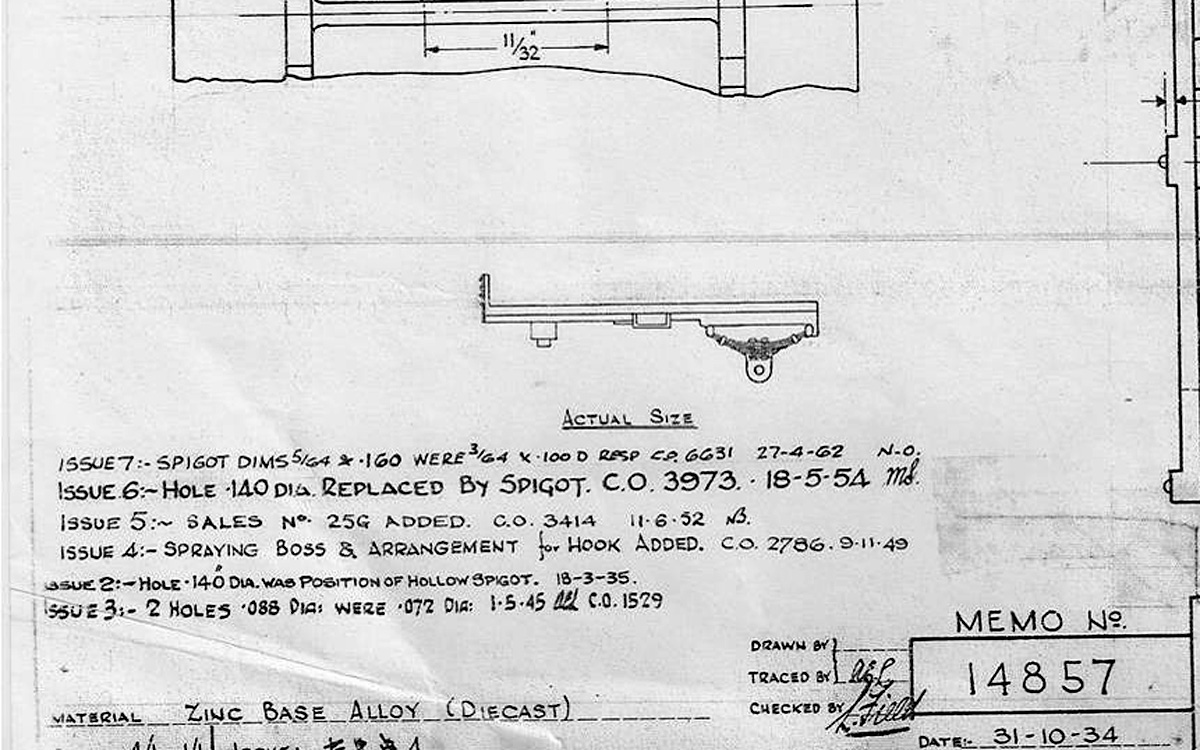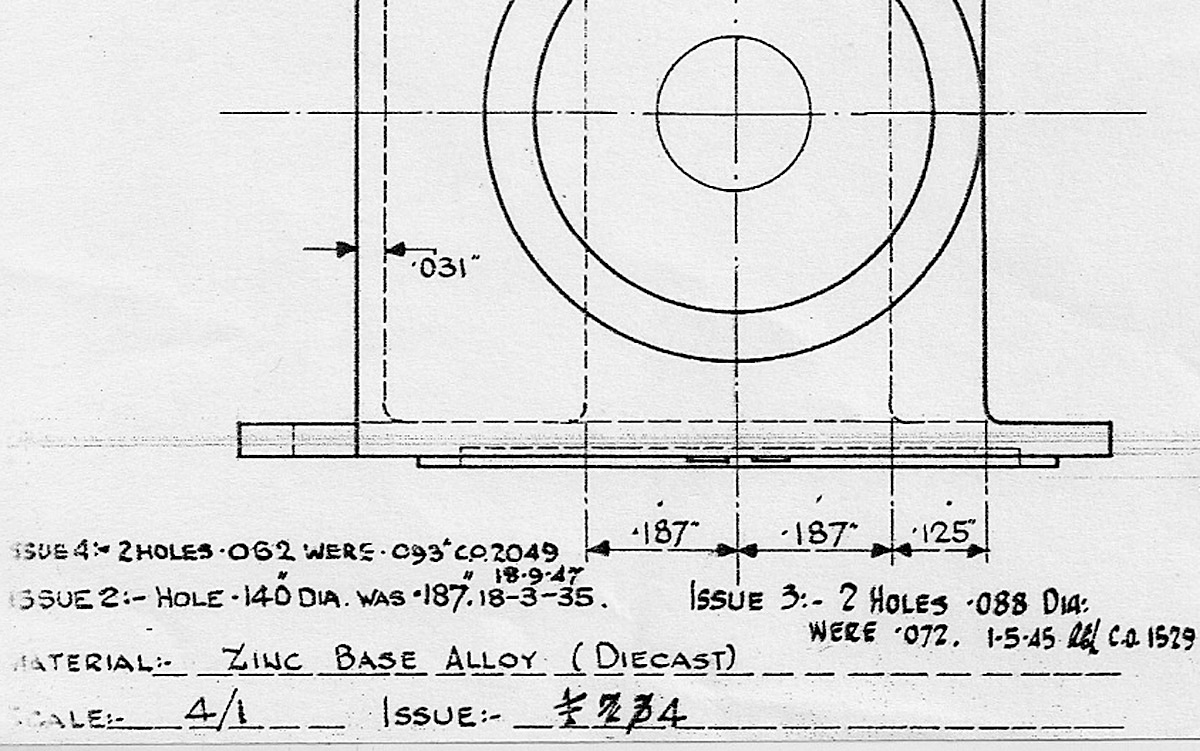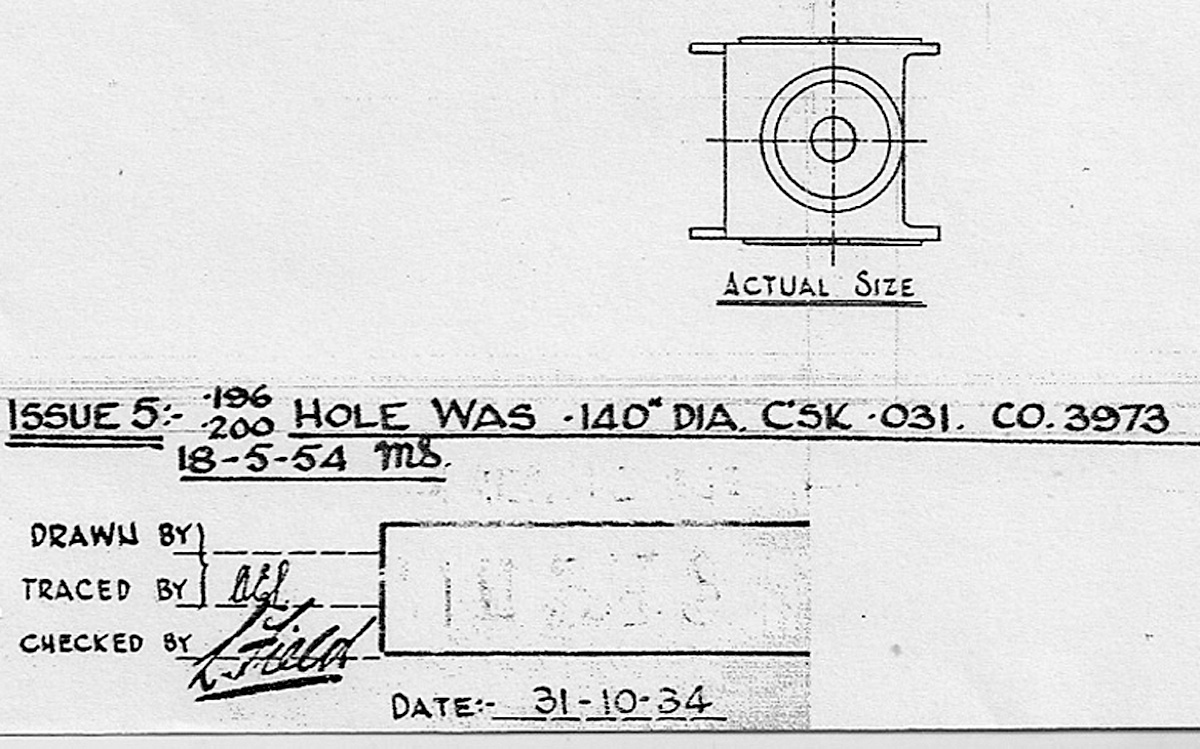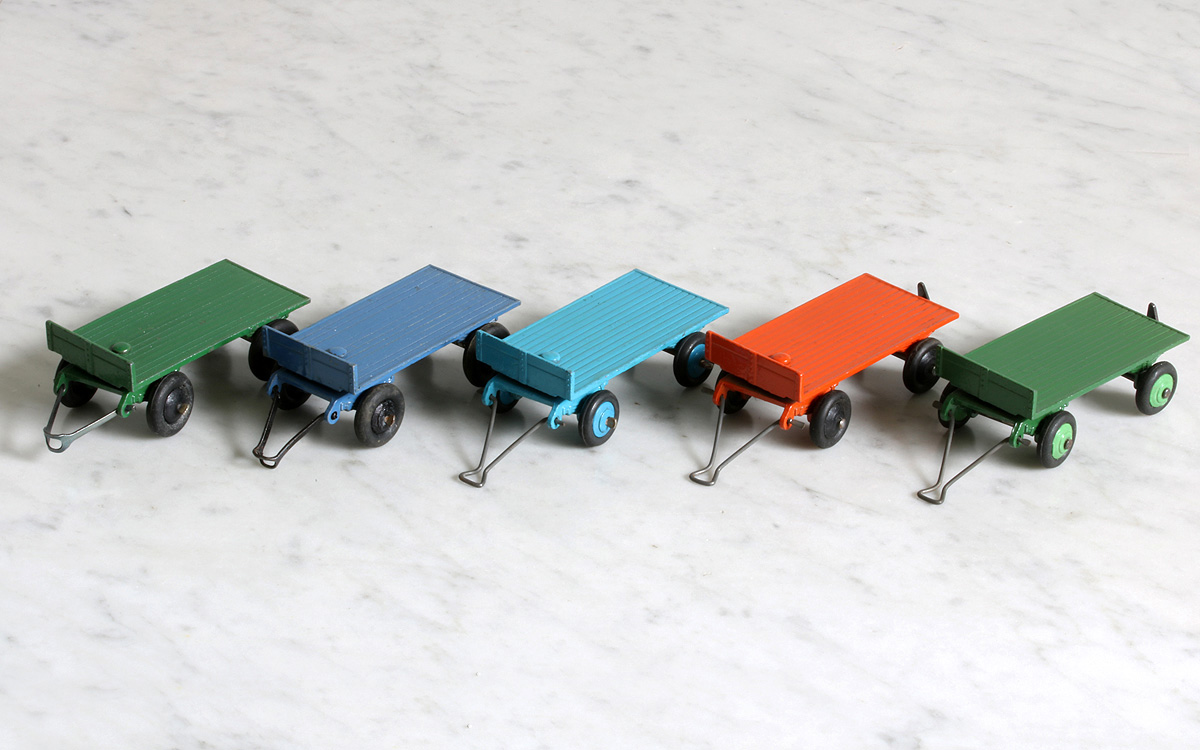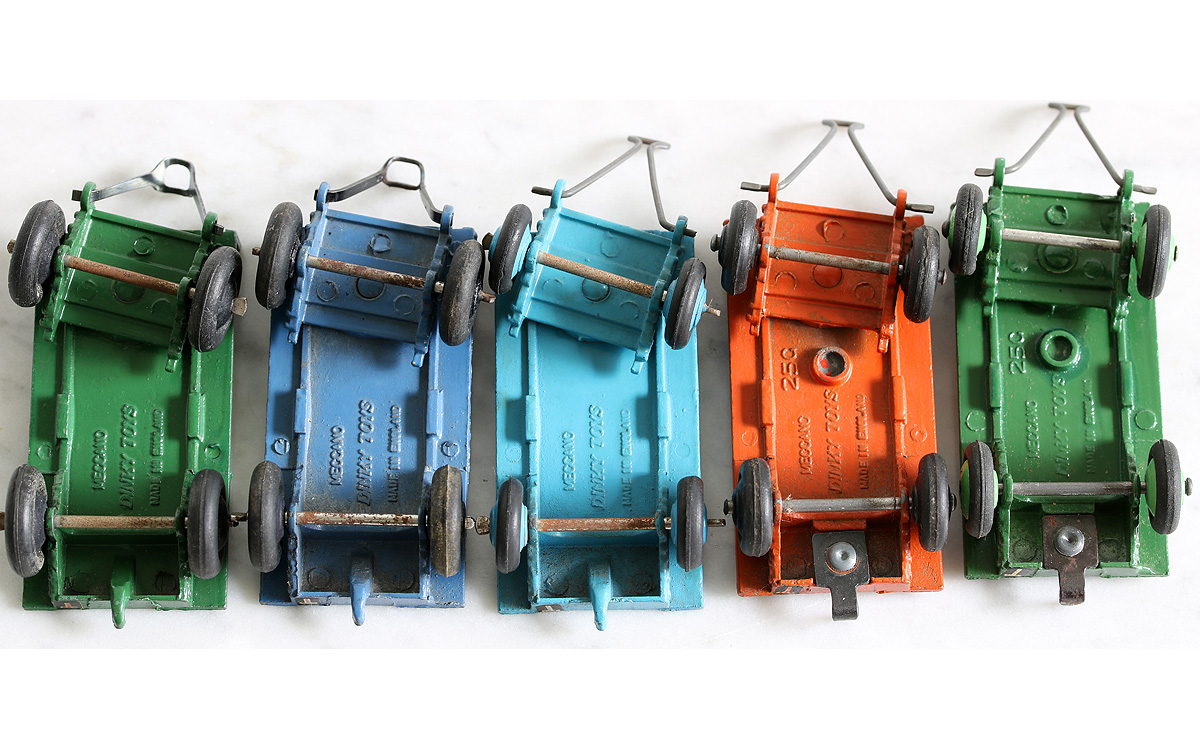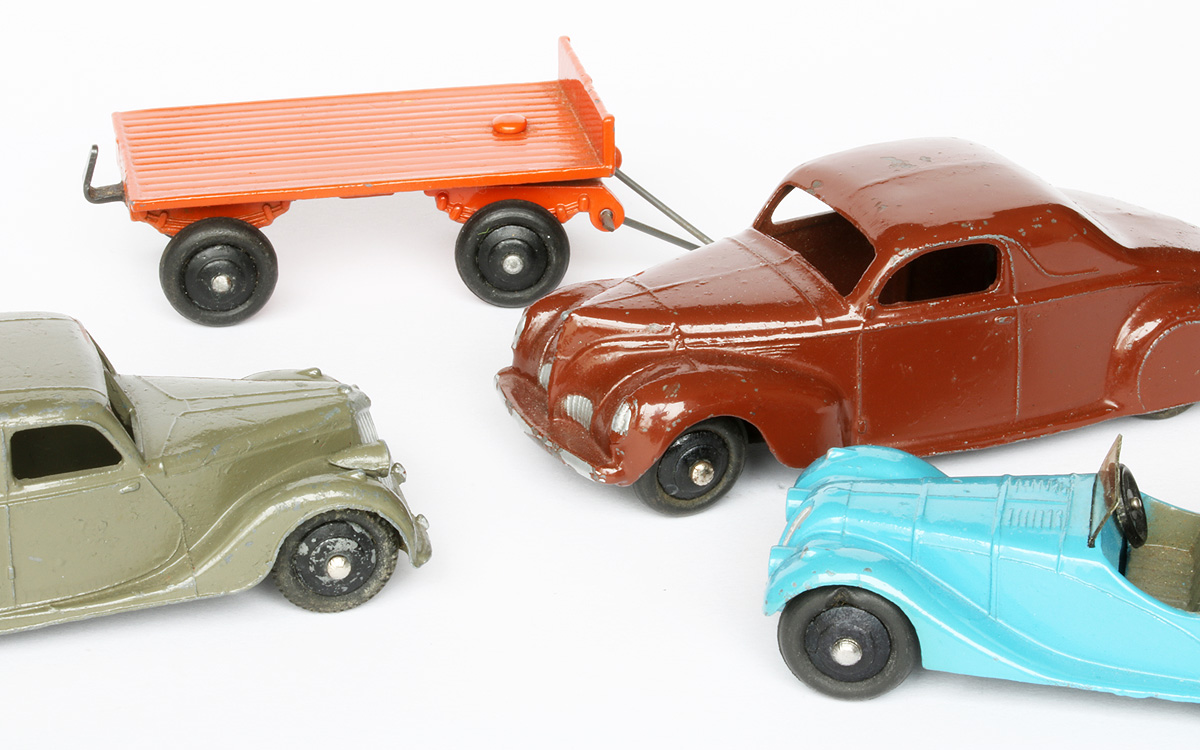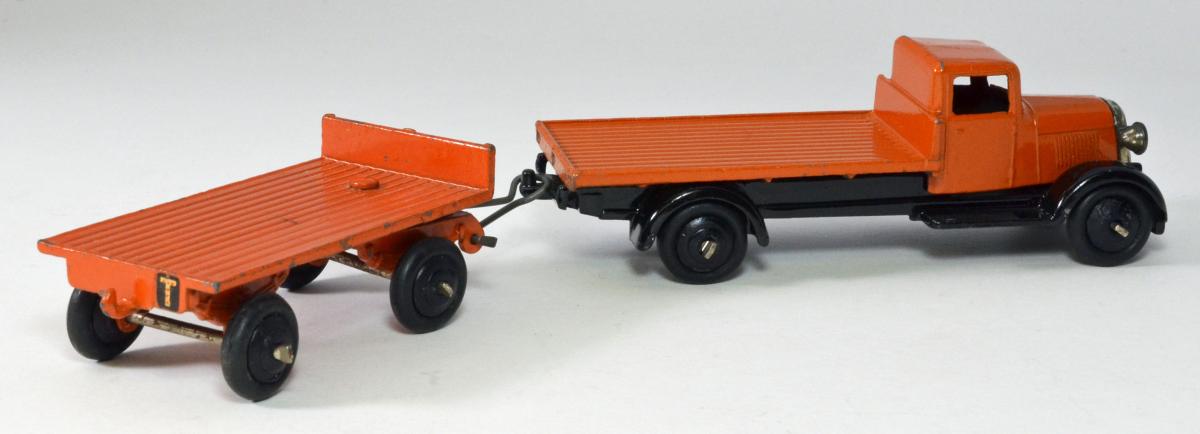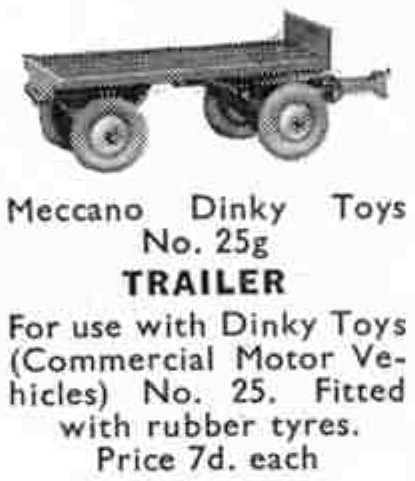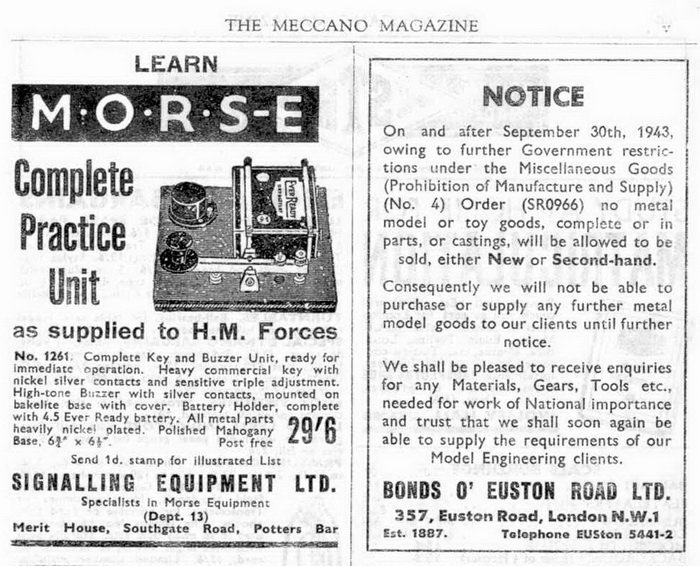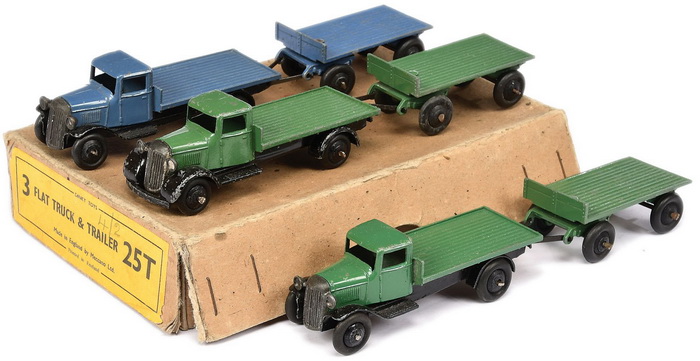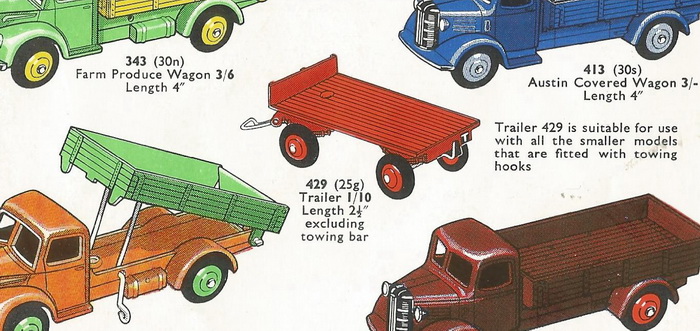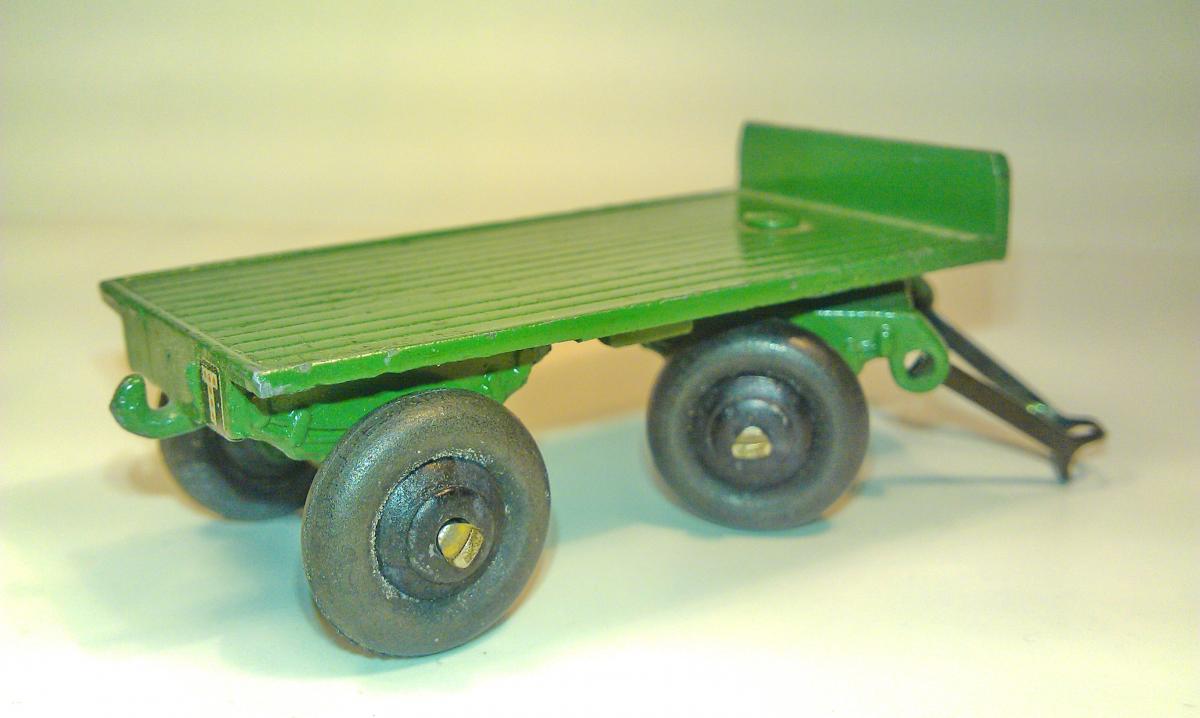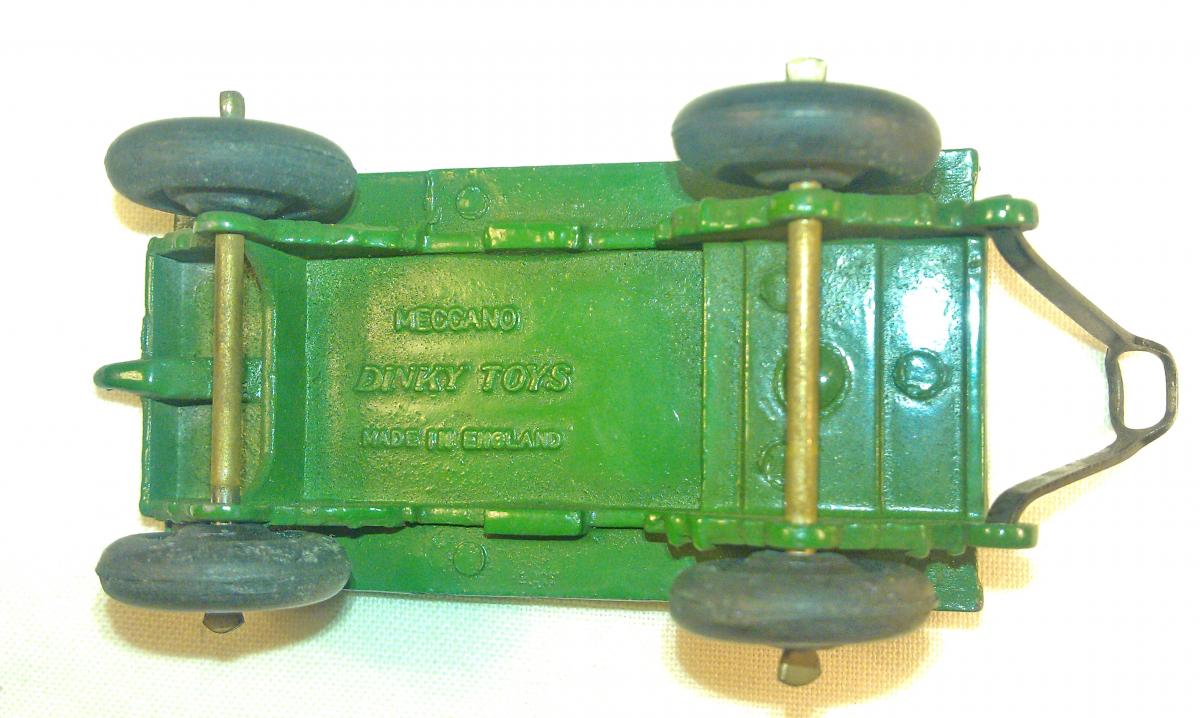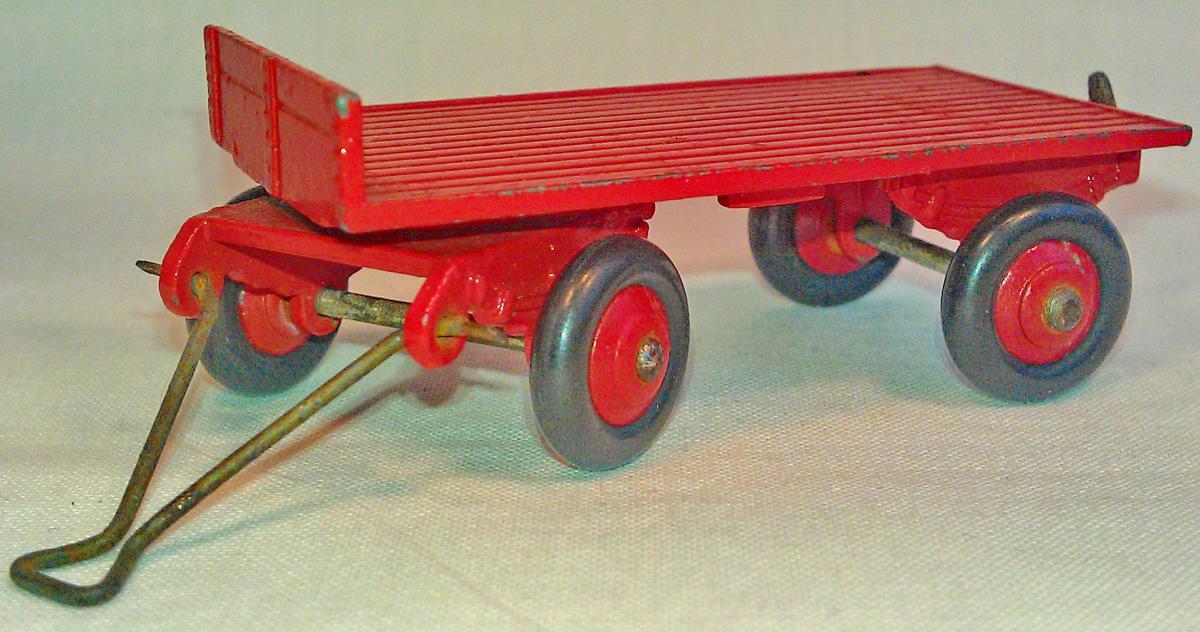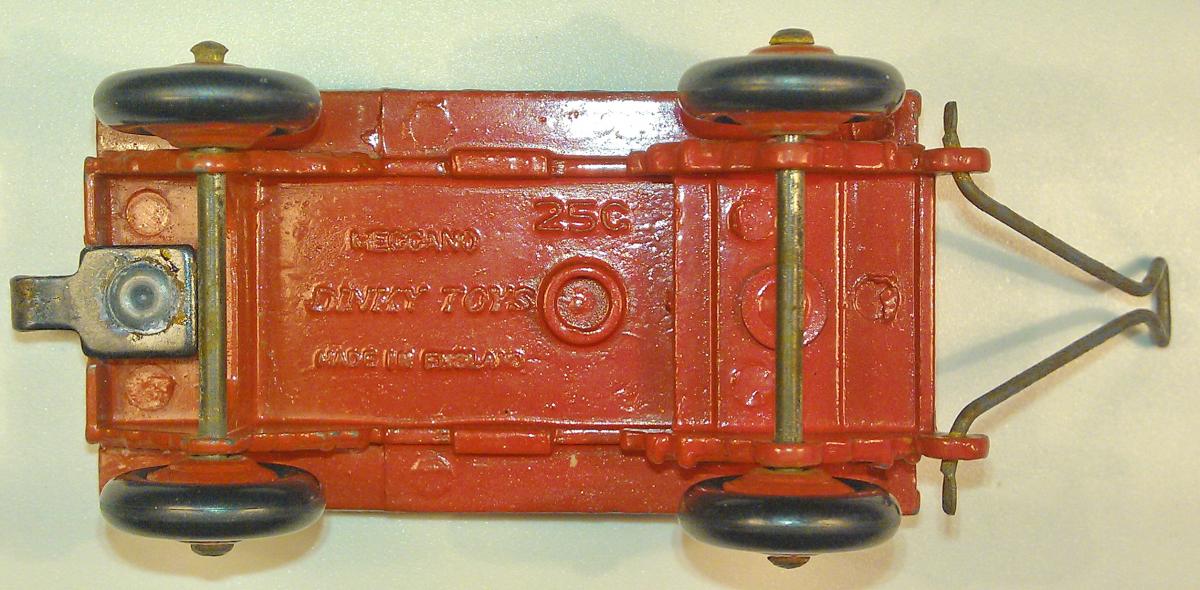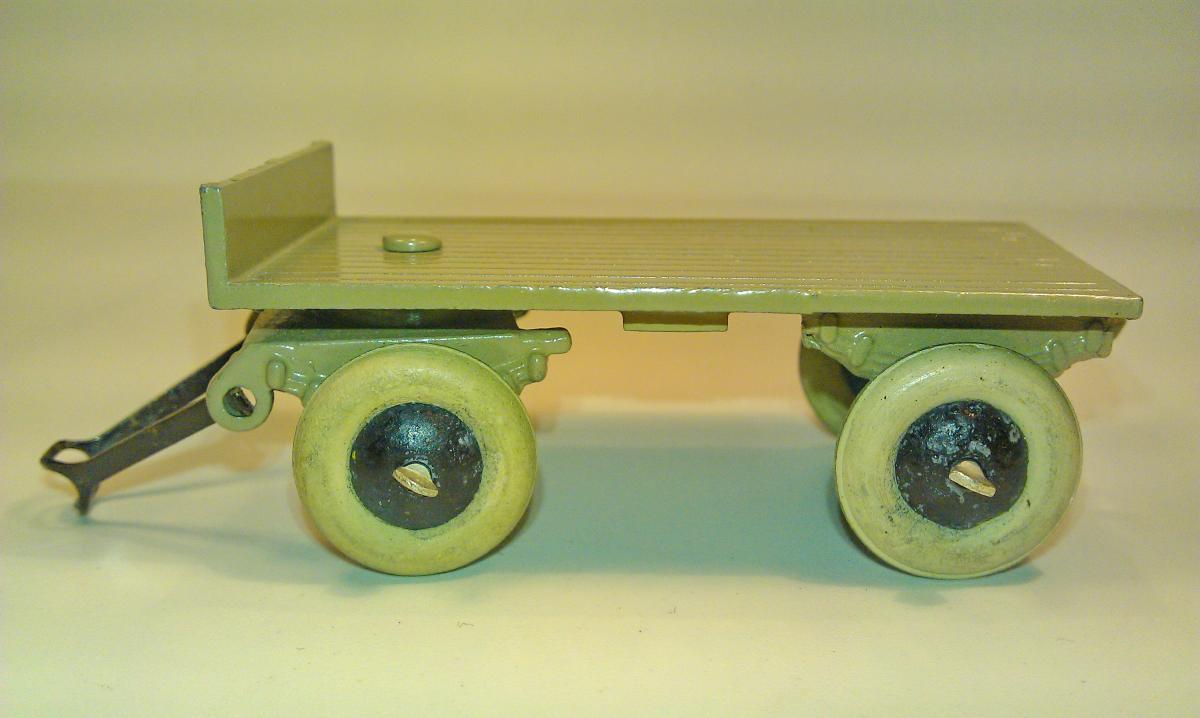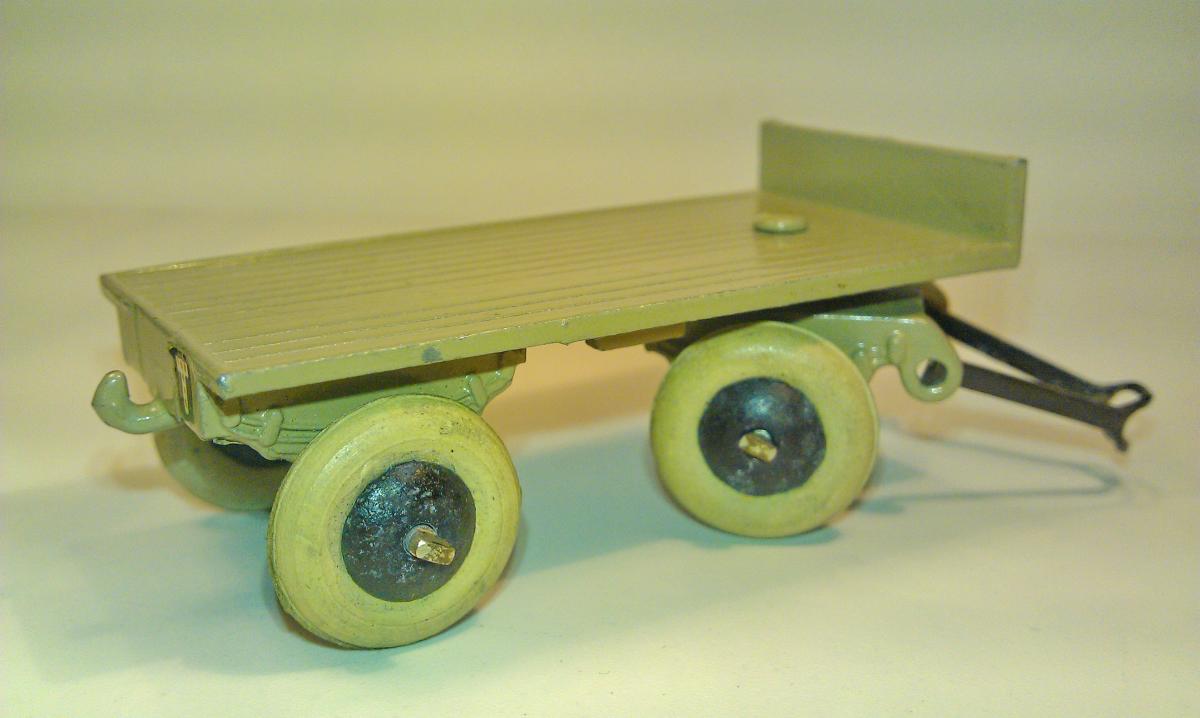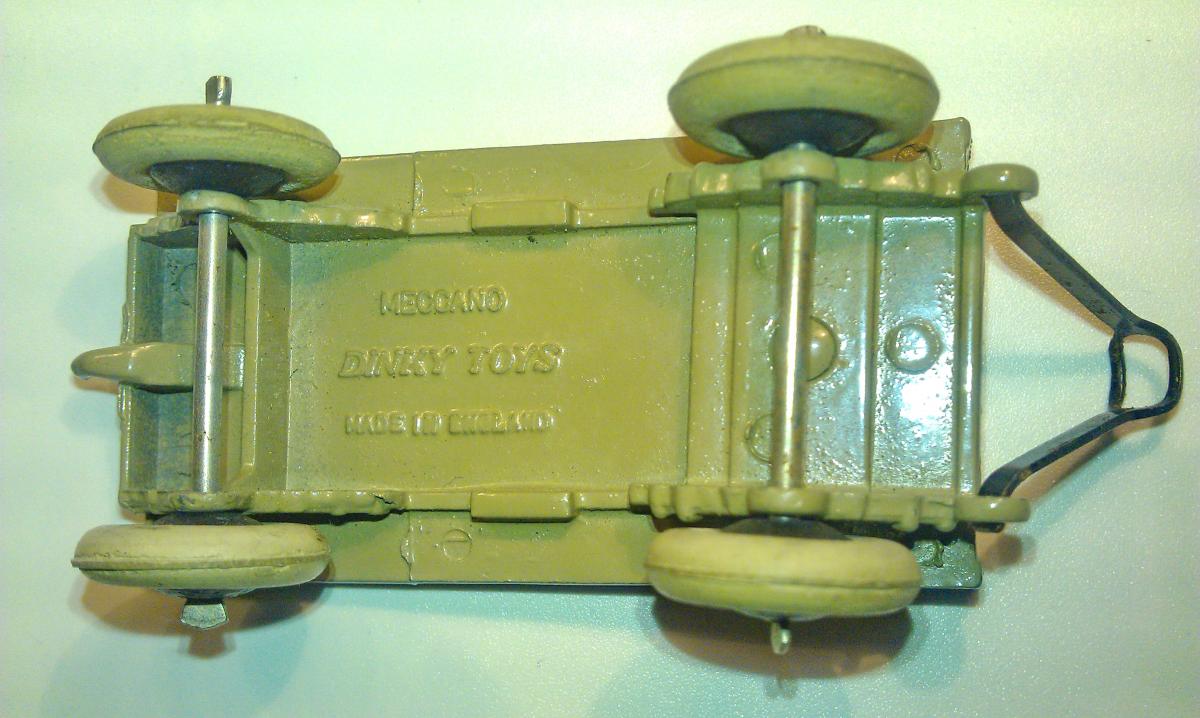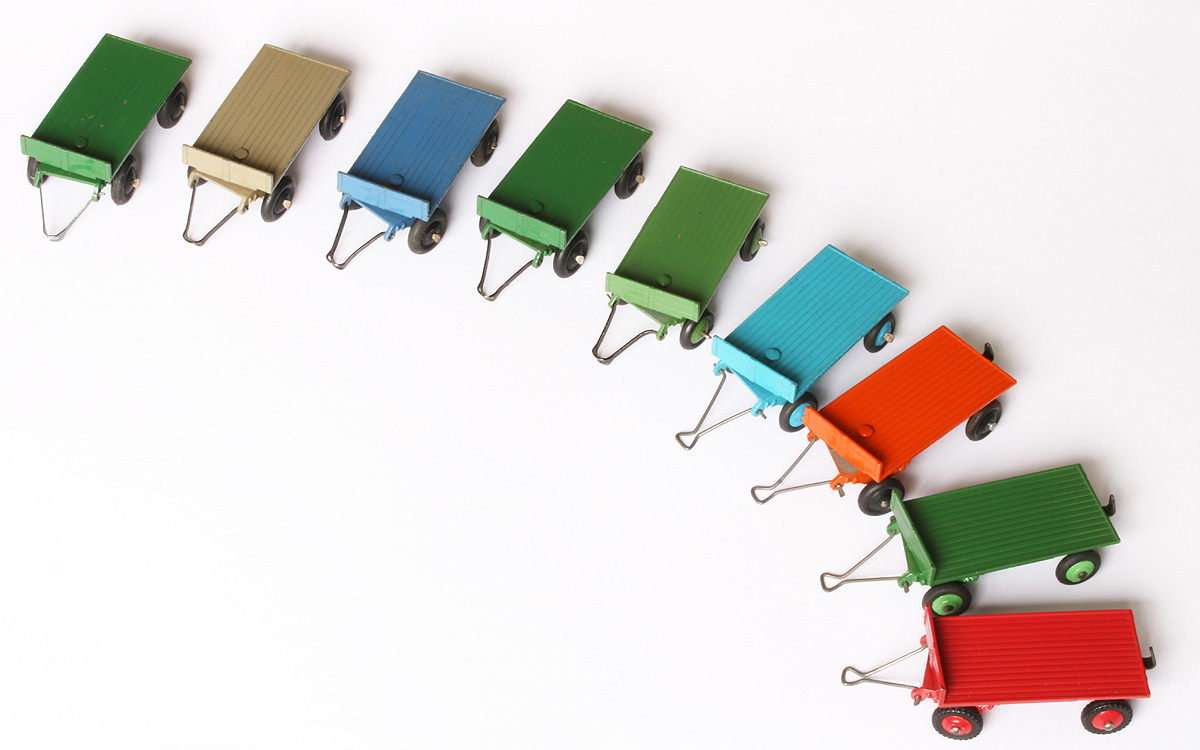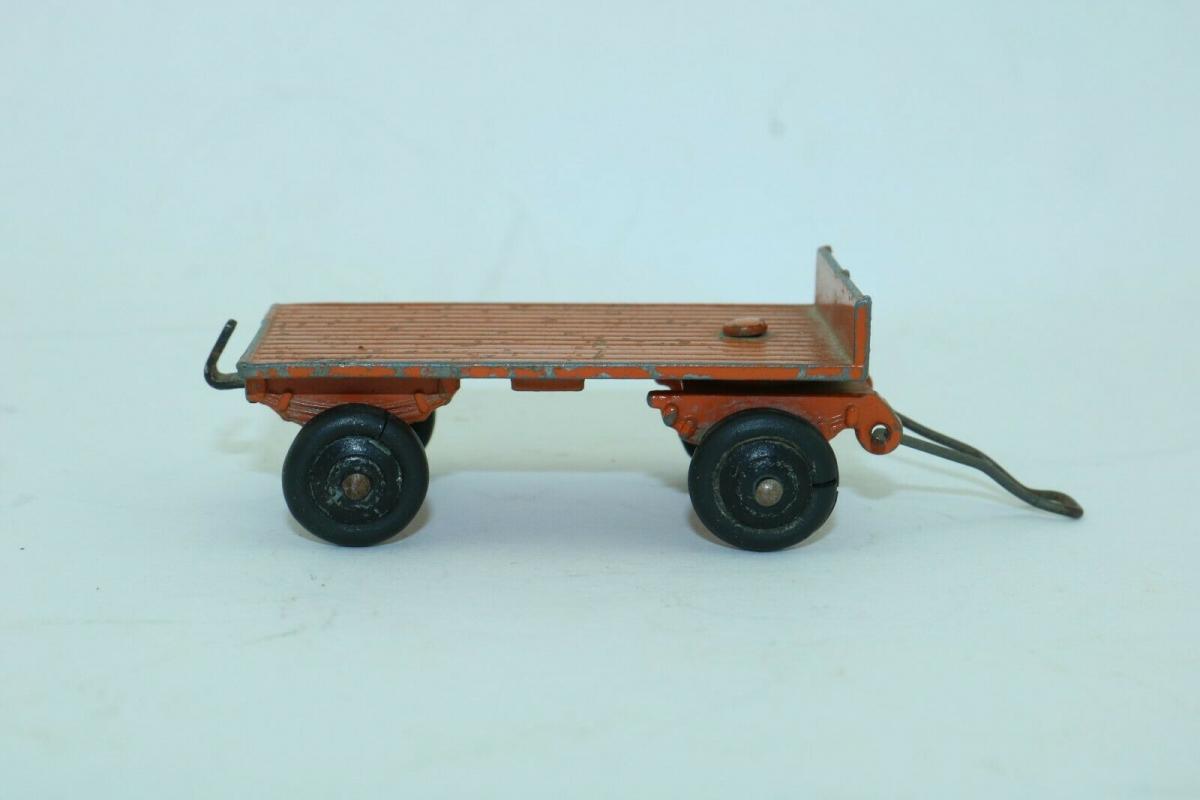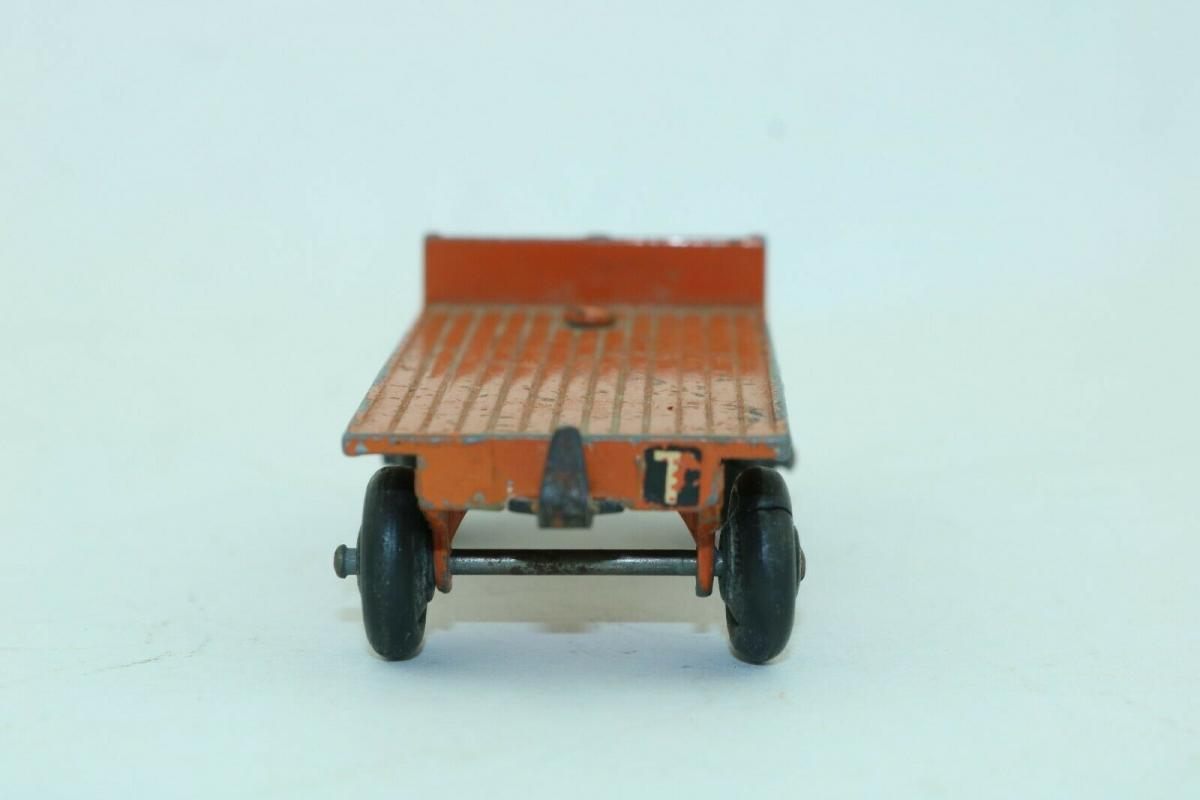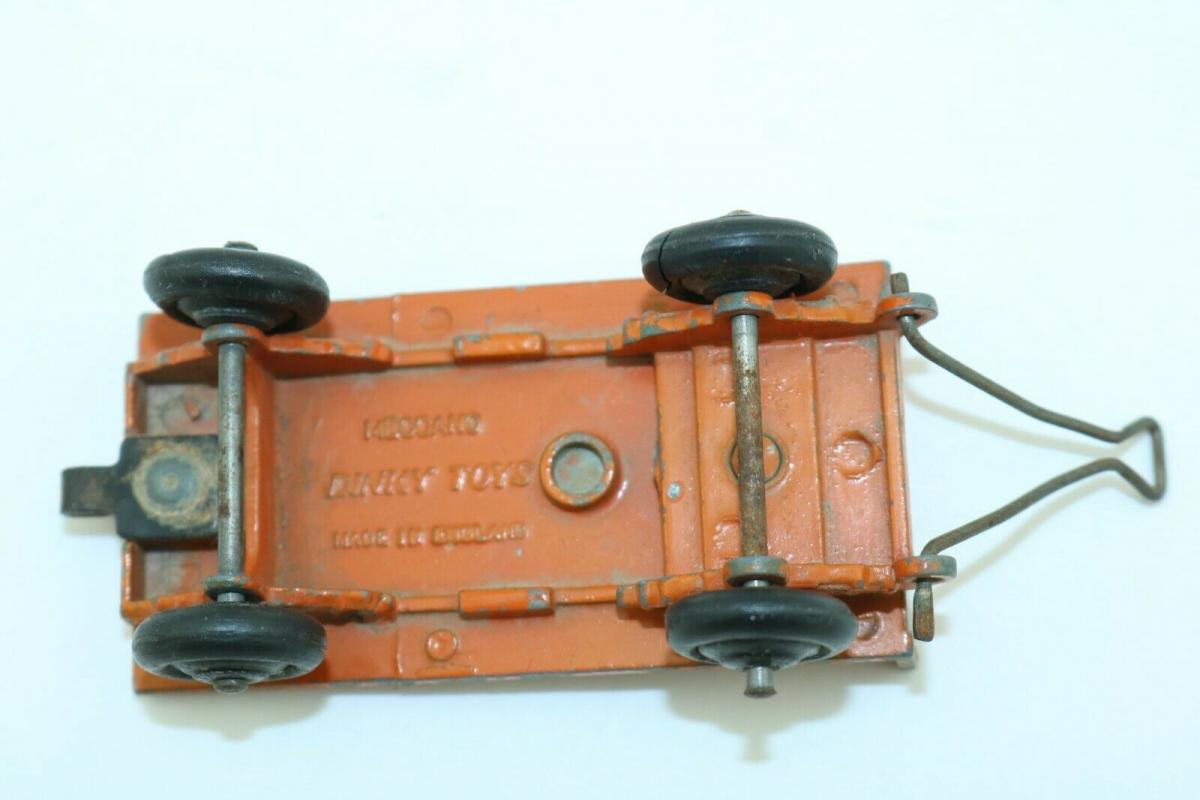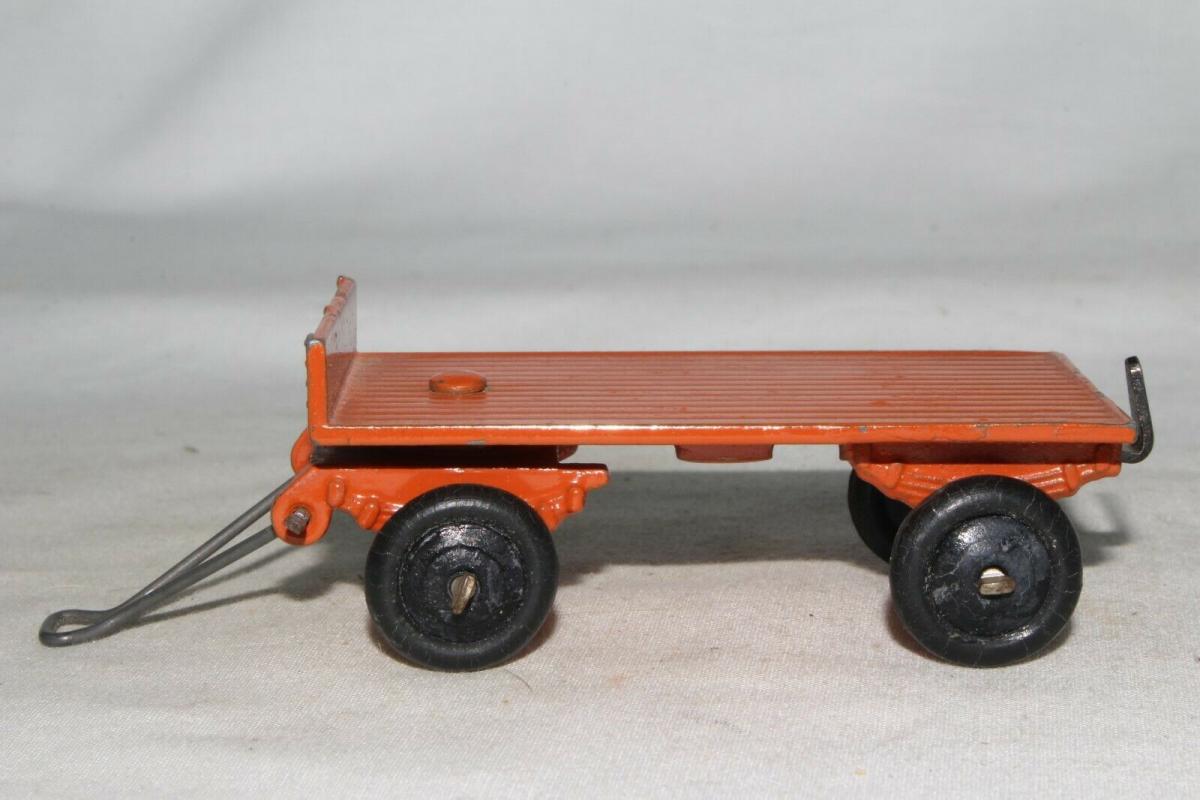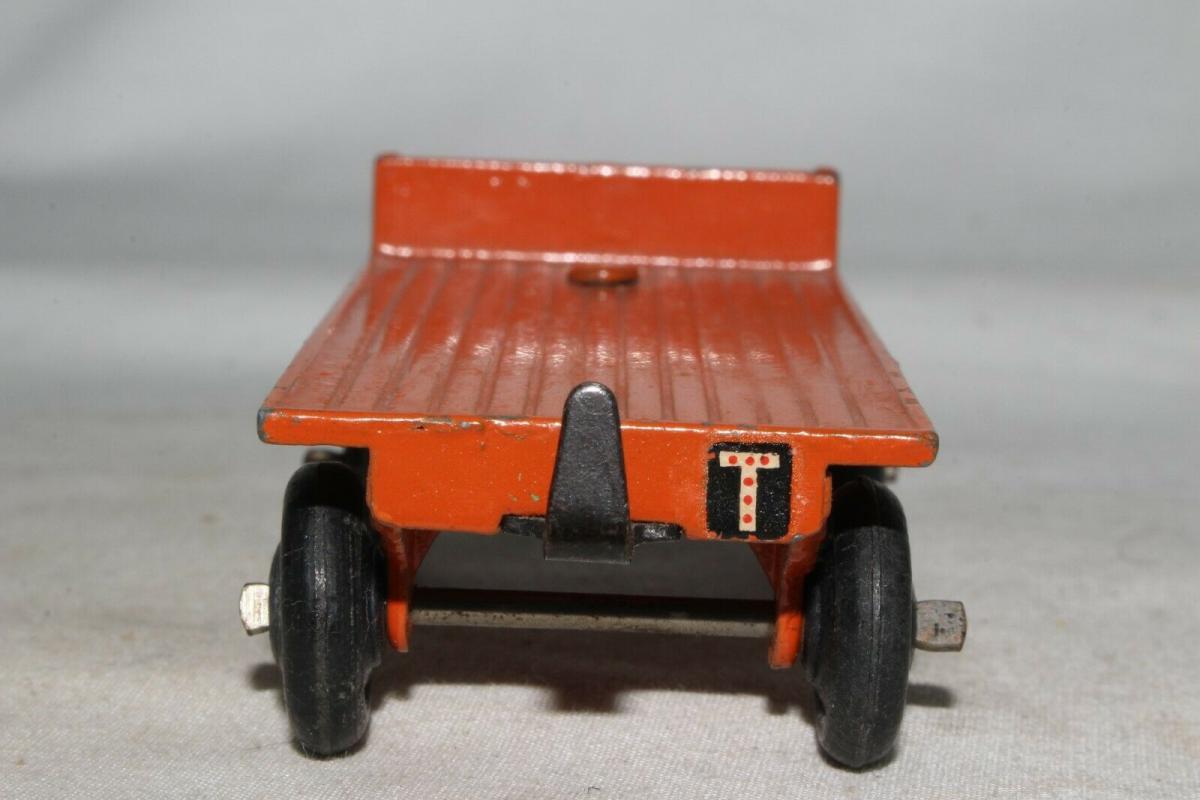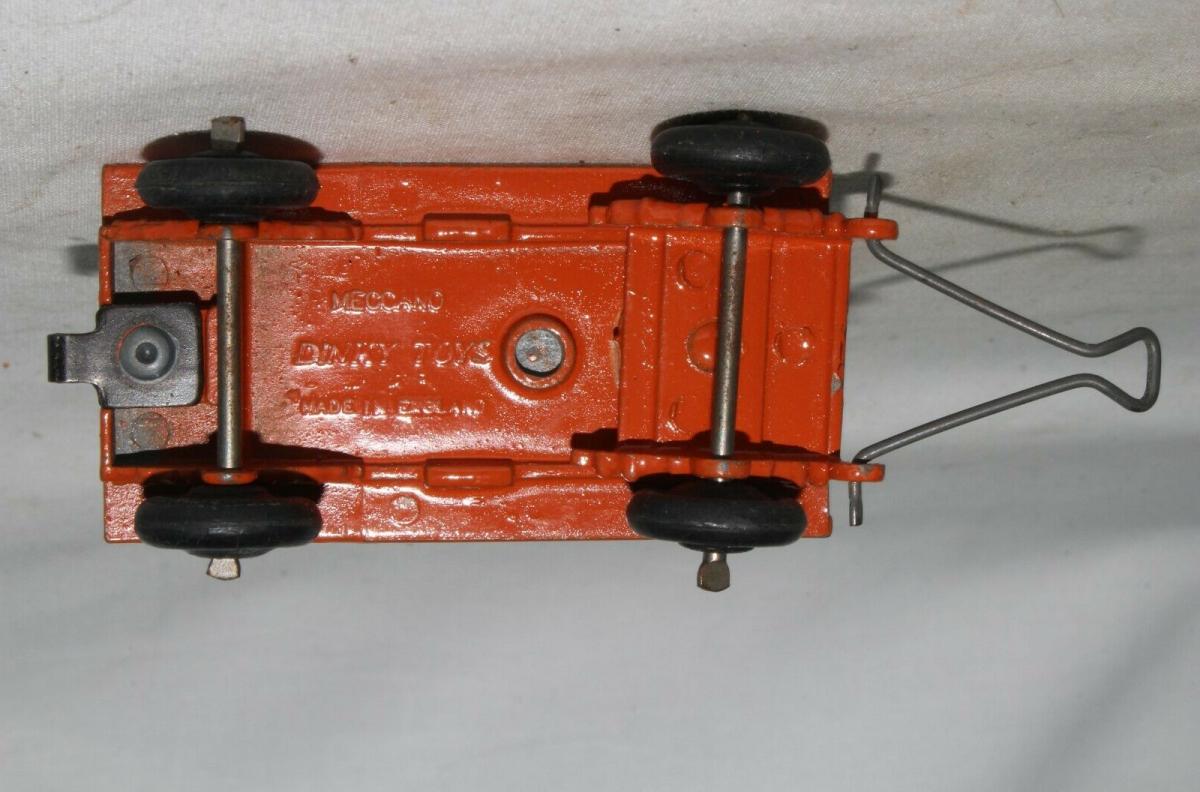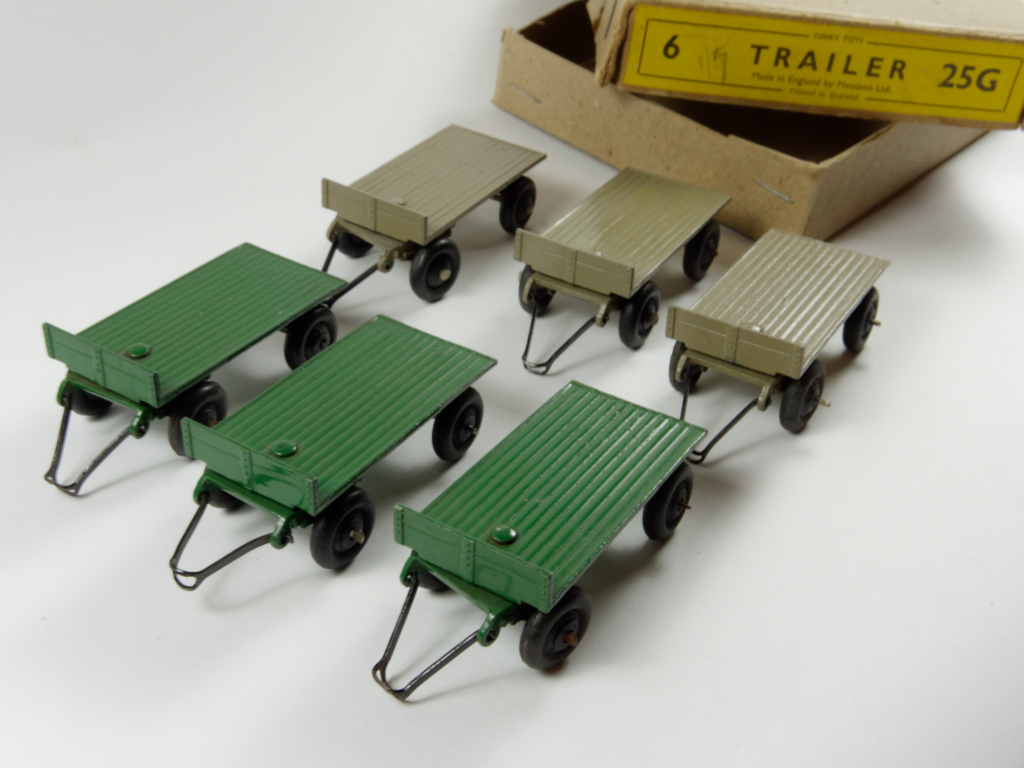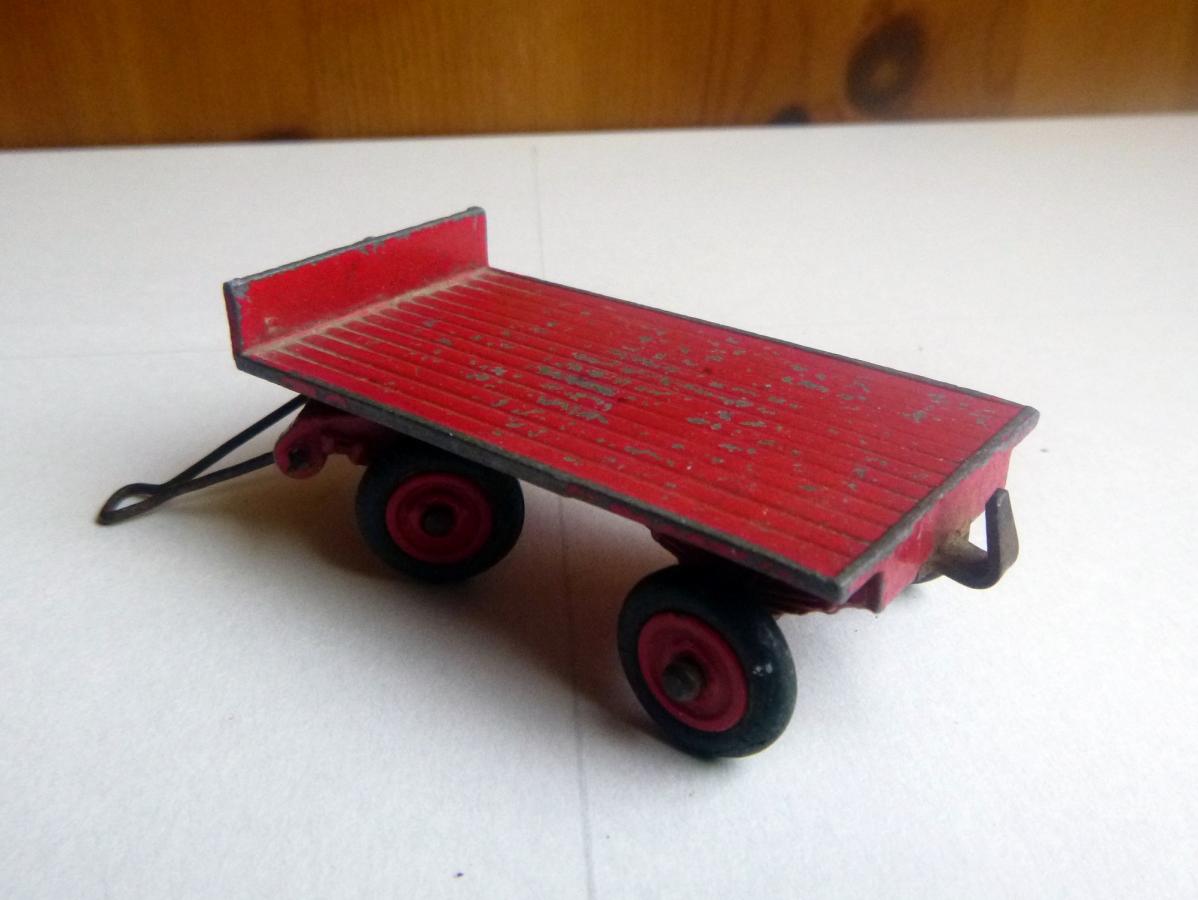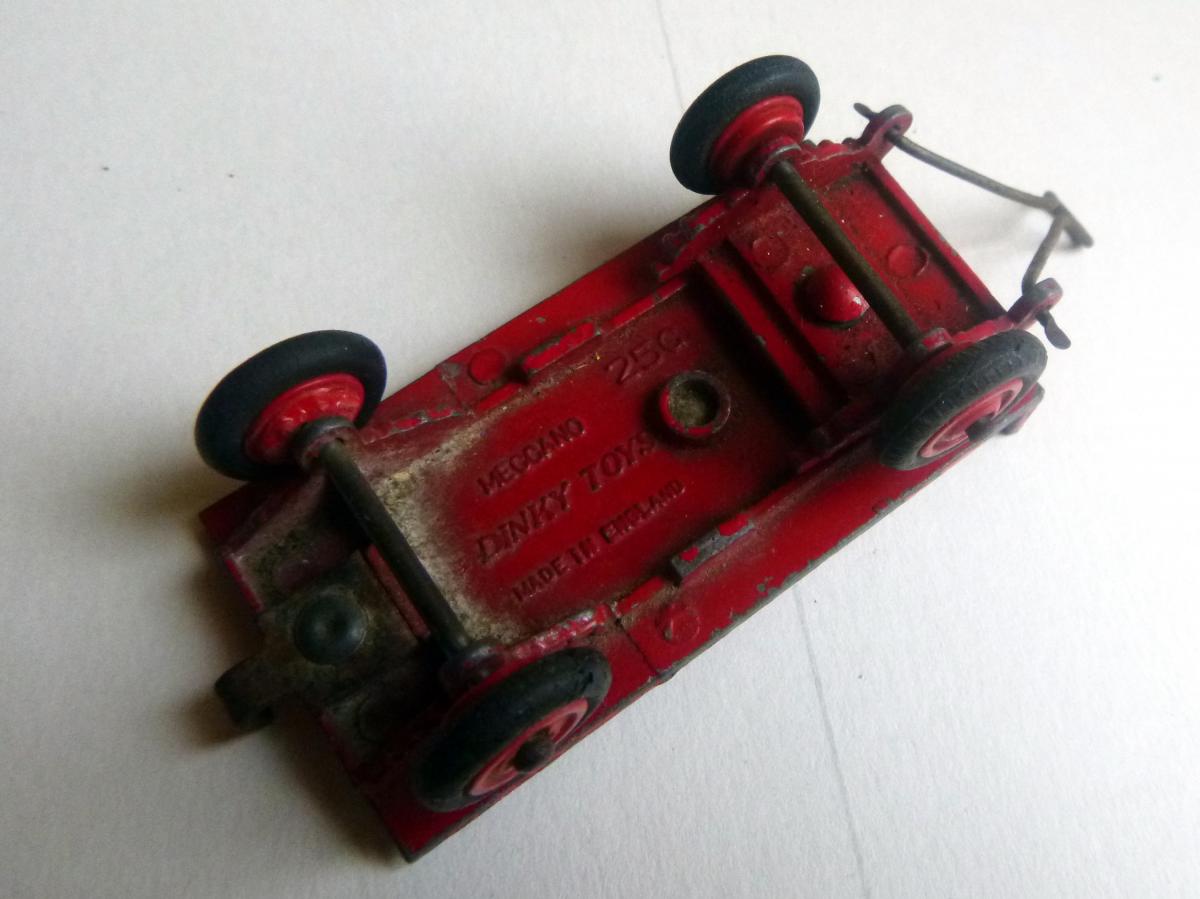- Posts: 2
- Thank you received: 0
25g and 429 Trailer (1935-64)
9 years 3 months ago #18871
by dinkyfan
Replied by dinkyfan on topic 25g and 429 Trailer (1935-64)
Jacques----Just wonderful that you are back with us, and hopefully you can return home and resume your prior activities in the near future. Sometimes, we do not realize a treasure when we have it.....only when it is missing!Best regards, Terry
Please Log in or Create an account to join the conversation.
5 years 9 months ago #22017
by janwerner
Replied by janwerner on topic 25g and 429 Trailer (1935-64)
A strange bird, this orange one, the early casting state with bogie pivot protruding through the hole in the loading platform and black pre-1950 hubs. Still, with the modern wire drawing bar, tinplate hook and late domed axle ends. I wonder if its only this orange version that shows these odd anachronisms. There are image representations of this combination of domed axle ends and black wheels in the 1947-48 American catalogue and still in the early 1950s US export catalogues. But these images are not consequent either, because they show the old tinplate drawing bar and not the new wire drawing bar. I took the US 1951 catalogue as an example to show that even within one catalogue the representations are different. The example of the Flat Truck and Trailer combination shows the rounded, domed axle ends, whereas the separate example next to it still has crimped axle ends. The Flat Truck of the combination shown seems to feature domed axles ends as well. I wonder if such a Flat Truck really exists, belonging to a domed axle ends trailer like my orange example. The characteristics of the various Trailers got mixed up this way. Especially when looking at the various changes and their dates, as recorded on the factory drawing. I put some of my Trailers in a line. Make your own comparisons, please. From left to right: 1. Earliest post-war example with smooth black hubs, crimped axle ends, tinplate drawing bar and cast hook, hole in loading platform to accommodate bogie. 2. Second version with ridged black hubs, crimped axle ends, tinplate drawing bar and cast hook, hole in loading platform to accommodate bogie. 3. Third version with ridged coloured hubs, crimped axle ends, wire drawing bar and cast hook, hole in loading platform to accommodate bogie. 4. Fourth (this) version with ridged black hubs, domed axle ends, wire drawing bar and tinplate hook, hole in loading platform to accommodate bogie, paint spray hole and 25G underneath. 5. Fifth version with ridged coloured hubs, domed axle ends, wire drawing bar and tinplate hook, spigot under loading platform to accommodate bogie, paint spray hole and 25G underneath. The combination domed axle ends AND black hubs is only found on the pre/postwar no. 39c Lincoln Zephyr, the open models of the 38 series and the earliest black wheeled examples of the no. 40a Riley Saloon and the no. 40bTriumph 1800 Saloon. So this orange Trailer belongs to the exceptions and has confusing characteristics with its domed axle ends combined with return to black hubs. Comments, suggestions, explanations welcome, of course! Kind regards, Jan
Please Log in or Create an account to join the conversation.
5 years 9 months ago #22018
by dinkyfan
Replied by dinkyfan on topic 25g and 429 Trailer (1935-64)
Jan---I thought I had shown this before, but here it is again. It appears to be different than any you showed, but very similar to your type 2. It has black ridged wheels, a cast towing hook, crimped axles.....but, it has a wire towing bar. I bought this as a set, from Keith Harvey many years ago, but have no proof it was really issued as a set. Best regards, Terry
Please Log in or Create an account to join the conversation.
5 years 9 months ago #22019
by janwerner
Replied by janwerner on topic 25g and 429 Trailer (1935-64)
Hello Terry, thank you for your comment. Your nice 25t is as 'regular' as mine (the light blue unit). It should really have the wire towing bar. However, the exceptional thing is the domed axle ends of my orange Trailer, which seem to 'demand' a complementary Flat Truck with domed axle ends as well. Unless, of course, it was sold separately only, neither exactly matching a 25c Flat Truck nor a 30r Fordson Thames Flat Truck. One would expect the change over from crimped to domed axle ends on a basically pre-war model like this in about 1952. Kind regards, Jan
Please Log in or Create an account to join the conversation.
5 years 9 months ago #22020
by dinkyfan
Replied by dinkyfan on topic 25g and 429 Trailer (1935-64)
Jan---Maybe I am missing something....your light blue also has blue wheels, whereas mine has black, I would guess meaning it is a bit earlier. With all the other variations I thought it was another version to list, although that is minor and not structural....It is always interesting to observe these differences and try and figure out when, where, and why! Best regards, Terry
Please Log in or Create an account to join the conversation.
- Jan Oldenhuis
-

- Offline
- User
-

Less
More
- Thank you received: 0
5 years 9 months ago #22021
by Jan Oldenhuis
Replied by Jan Oldenhuis on topic 25g and 429 Trailer (1935-64)
I like to add some information about the history of this model, because in my eyes it is the most representative model of die casting of the genuine Meccano Liverpool die casting period from 1934-1964. It is a very small model, but has much interesting casting and colour variations during its long production timeline of which most are already shown here. I had already made a draft contribution on this subject and now publish it as a supplement. 25g was the first Trailer be made and is a model of Meccano Liverpool that as far as I know has been in production for the longest time, namely from 1935-1964, with a short interruption in WWII. It starts with the introduction in Meccano Magazine of June 1935. As announced, it was intended for use with the 25 series Commercial Motor Vehicles, issued in April 1934 with a tow hook, but had still nothing to tow. In the pre-war period it was issued until the war in September 1943, after which no more metal toys were allowed to be made or sold due to the war production.
Introduction in MM June 1935. It was intended for use with Commercial Motor Vehicles no. 25.
August 1935: 25g in The Book of Hornby Trains and Meccano Products. Note the white rubber tyres.
Meccano Magazine September 1943 restriction goods by government due to war production. The die had survived the war and after the war, the trailer was taken into re-production and from May 1946-1950 it was for the first time part of the combination Flat Truck and Trailer issued under sales number 25t.
25t Flat Truck and Trailer in trade box of 3 pieces. Photo by courtesy of Vectis. From October 1948, 25g was again issued individually as 25g trailer, besides the 25t Flat Truck and Trailer that was deleted in 1950, while the 25g Trailer went on to 1964.
429 (25g) in catalogue UK 1954. In the meantime there were so many models made with tow bars that the model now got the addition in the catalogue: Trailer 429 is suitable for use with all the smaller models that are fitted with towing hooks. I have 3 casting and colour variations of the 25g: 1) A green one with a rivet and without number and painting ring, black ridged hubs with big black rubber tires, a tinplate drawbar, a cast towing hook and a T sign on the rear, crimped axles. I think it is the 2nd post-war version. 2) A red later post-war one with number 25g and painting ring, wire drawbar, tinplate hook, T sign on rear and axle pivot is part of main casting, domed axles. Recently I received a very early post-war 25g trailer with big white rubber tyres which I never saw before. 3) A grey/stone trailer also with a rivet and without number and painting ring, black smooth hubs with big white rubber tyres, a tinplate drawbar, a cast towing hook and a T sign on the rear, crimped axles. I think it must be the earliest 1st post-war version. In the early post-war period are still white tyres fitted on some models like on my 153a Jeep and 38c Lagonda. I never saw such post-war trailer with big white rubber tires before. Except the thick axles as far as I know it is equal to a pre-war one. Pre-war, apparently not a single casting change took place. I think that my 25g stone trailer is a part of a 25t stone Flat Truck (25c) & Trailer (25g). Some drawing details GBofDT worth to know: 31-10-1934 Main drawing Platform for trailer 18-9-47 drawbar changed to wire 18-9-47 drawbar holes reduced 9-11-49 spraying boss & arrangement for hook added 9-11-49 change to tin hook 11-6-52 sales no. 25g added 18-5-54 rivet replaced by spigot 18-5-54 turntable fixing spigot added Jan Oldenhuis, 19 February 2020
Please Log in or Create an account to join the conversation.
5 years 9 months ago #22022
by janwerner
Replied by janwerner on topic 25g and 429 Trailer (1935-64)
Hi Terry, I agree, I wasn't perfectly clear, sorry about that. Focussing on the domed axle ends I meant yours is a regular 25t type 4, like mine, in the structural sense that it has the wire drawing bar and the crimped axle ends, as usual. The tinplate drawing bar of the early trailers do not correctly fit the new, heavier cast towing hook of the type 4 trucks. Of course the finish is different, the black hubs being earlier and the coloured hubs being characteristic for later export models. Jan, thank you for the interesting additions! Below a snapshot of all post-war 25g/429 models I could quickly grasp from my displays, lined up in the best possible chronological order. The brighter green one is the French casting. Kind regards, Jan W
Please Log in or Create an account to join the conversation.
- Jan Oldenhuis
-

- Offline
- User
-

Less
More
- Thank you received: 0
5 years 9 months ago #22023
by Jan Oldenhuis
Replied by Jan Oldenhuis on topic 25g and 429 Trailer (1935-64)
I still have not seen any pictures of a pre-war 25g Trailer in this subject. Does anyone have a Pre-war 25g Trailer that is willing to post pictures here? I am curious as to whether there is a casting difference with my 1st version post-war 25g trailer with white tires pictured in #18 or not. Jan O.
Please Log in or Create an account to join the conversation.
- dinkycollect
-
 Topic Author
Topic Author
- Offline
- User
-

Less
More
- Thank you received: 0
5 years 9 months ago #22026
by dinkycollect
Replied by dinkycollect on topic 25g and 429 Trailer (1935-64)
Unfortunately it is very difficult to find pictures of the underside of Dinky Toys. I think that a second die for the 25 g trailer was introduced when the steel hook replaced the cast one in 1948 but with his many 25gs Jan Werner can certainly show us more details. The next casting variation seem to be the deletion of the bogie rivet (a cost reduction) and the addition of the painting ring in 1954. This does not mean a new die although it is very likely that during the life span of twenty years of this model at least two dies were used. The tinplate tow bar was changed to wire in 1947.Please correct me if I am wrong anywhere. Jacques
Please Log in or Create an account to join the conversation.
- Jan Oldenhuis
-

- Offline
- User
-

Less
More
- Thank you received: 0
5 years 9 months ago #22029
by Jan Oldenhuis
Replied by Jan Oldenhuis on topic 25g and 429 Trailer (1935-64)
As a counterpart of Jan Werner's orange version in comment #14 1) I found the same orange version with domed axles and a painting ring in the base, however without number 25g. It would then be a version between 3 and 4 in his lineup summary. 2) At the same time I found also a 25g orange version with crimped axles, a painting ring and also without number in the base, however with crimped axles. It would also be a version between 3 and 4 in his lineup summary. I did not yet see these versions in any contribution.We can conclude that the order of the bases, just as with the 27 series Farm Equipment, is always:1) base without painting ring and without number2) base with painting ring, but without number3) base with painting ring and with numer Jan O.
Please Log in or Create an account to join the conversation.
- johnnyangel
-

- Offline
- User
-

Less
More
- Posts: 1
- Thank you received: 0
5 years 9 months ago #22036
by johnnyangel
Replied by johnnyangel on topic 25g and 429 Trailer (1935-64)
To add quantity if not quality to this thread, here is a box of postwar trailers I recently acquired from Keith Harvie. Some have the 'T' on the back and sone do not, while on one the decal is half there. I noticed that earlier in the thread it's mentioned that the T may have been omitted for export markets. My personal opinion is that the T should always be there but is easily damaged. As a child in the U.S. I had among my very first Dinkys two trailers, one red and one green, that were the second-to-last type. Both had the T.
Please Log in or Create an account to join the conversation.
3 years 1 month ago #23870
by fodenway
Replied by fodenway on topic 25g and 429 Trailer (1935-64)
I picked up this playworn 25G Small Trailer at the recent Doncaster Toy Fair for just 2. I noticed that it has plastic hubs and '25G' cast underneath, so thought it worth adding to my collection. The tyres are old, but have more than likely been changed at some point by a young owner. Did any of these trailers carry the number 429, or was the die never changed from 25G?
Please Log in or Create an account to join the conversation.
Time to create page: 1.662 seconds

